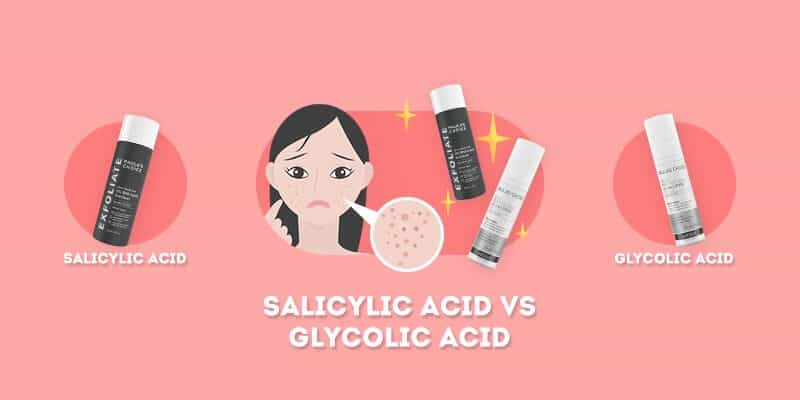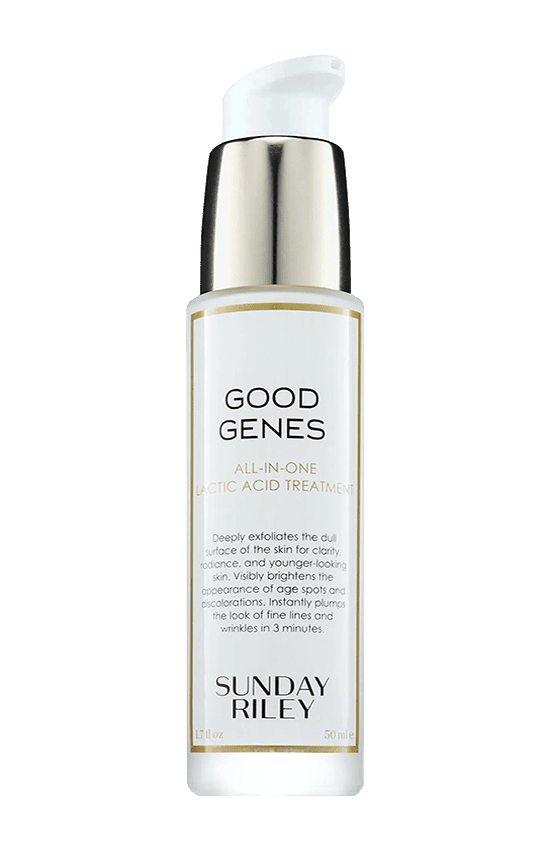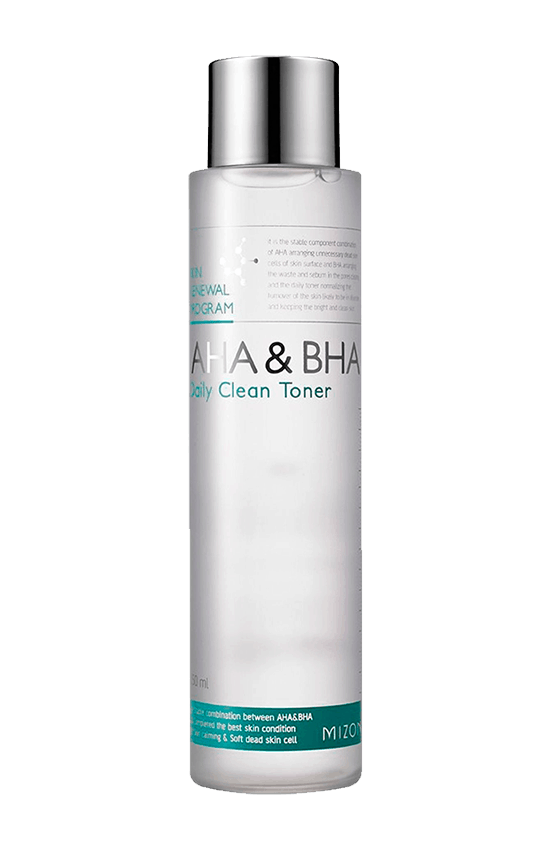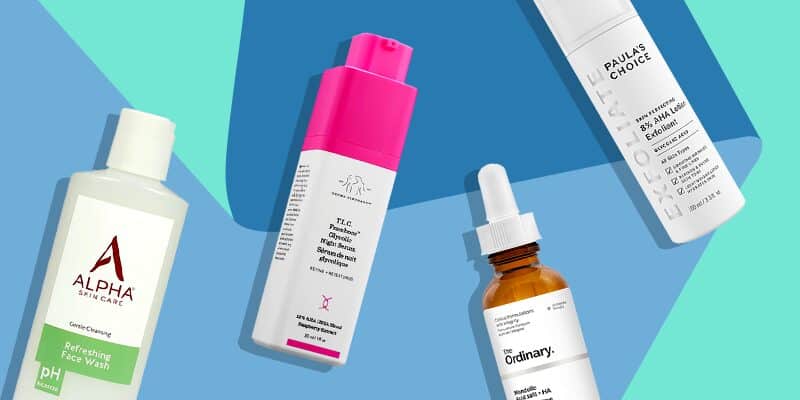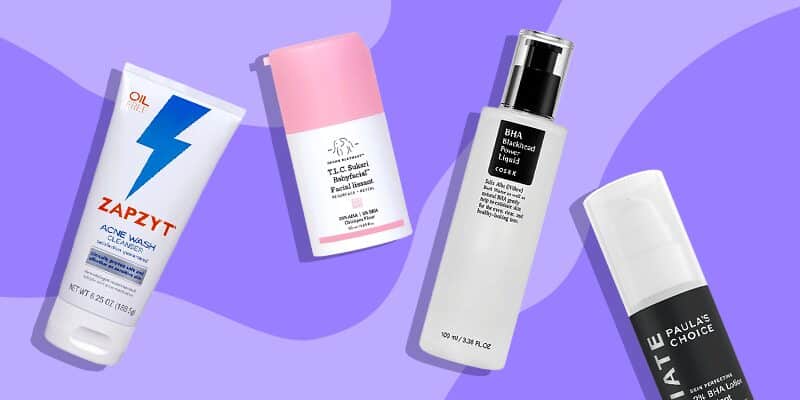By now, you've probably heard a lot about the benefits of using glycolic acid or salicylic acid. But, how do you know whether to use glycolic or salicytlic acid? They each have specific purposes. So read on to help determine which acid is best for your skin.
Glycolic Acid vs. Salicylic Acid
Glycolic acid and salicylic acid are both types of hydroxy acids primarily used for skin exfoliation. While they are similar in their overall purpose to exfoliate the skin, they have distinct differences that distinguish them from each other. Glycolic acid is also known as an alpha hydroxy acid (AHA) while salicylic acid is known as a beta hydroxy acid (BHA).
Alpha Hydroxy Acids (Glycolic)
The primary difference between the two types of exfoliants is that AHAs are water-soluble acids naturally derived from sugary fruits. This type of acid works to peel away the surface of the skin. This surface peeling leaves new and more evenly toned skin cells in its place. A daily regimen that includes the use of AHAs will leave skin feeling smooth and soft.
Beta Hydroxy Acids (Salicylic)
BHAs are oil-soluble, making it easier for them to penetrate deeper into the pores. This deep cleaning action makes this type of acid better for oily skin as opposed to its AHA counterpart. Like AHAs, BHAs treat the surface of the skin. But the oil-soluble properties of BHAs make it easier for the acid to get into the center of the pore.
Glycolic Acid (Benefits and When to Use)
When it comes to the family of AHAs, glycolic acid is the king. A strong track record of delivering results and a myriad of research backing up its effectiveness make this acid the first choice for many skin care professionals. Glycolic acid goes to work on the uppermost layers of skin to strip away dead skin cells and reveal a fresh layer of brightness. This AHA is also able to encourage the skin to retain moisture more effectively, delivering crucial hydration benefits. Lastly, this acid treats signs of aging by promoting skin firmness and reversing the effects of sun damage and other mild cases of hyperpigmentation.
You can use glycolic acid alone or combine it with other AHAs to enhance the overall condition of your complexion. As the holy grail of exfoliation, the benefits of glycolic acid are vast and proven, making it a good choice for nearly any skincare routine.
Glycolic Acid is Best For
- Mild Hyperpigmentation - AHAs are ideal when treating mild cases of hyperpigmentation that come as a result of age spots, melasma, and moderate acne scars.
- Enlarged Pores - AHAs make great pore minimizers. Because glycolic acid has the smallest molecular size of any AHA, it is able to penetrate the skin with ease. By removing excess skin cells from the surface of the skin, pores will appear smaller.
- Fine Lines and Surface Wrinkles - The exfoliating and hydrating properties of glycolic acid help to firm up the skin and soften its edges, minimizing the appearance of fine lines and wrinkles.
- Uneven Skin Tone - By improving the resilience of the skin and sloughing away the dead cells, the skin will become more evenly toned and brighter.
Best Glycolic Acid Exfoliants
1. Paula's Choice SKIN PERFECTING 8% AHA Gel Exfoliant
This leave-on exfoliant strips away dead layers of skin to reveal a younger-looking and unblemished complexion. The gentle ingredients in this treatment deliver noticeable results by softening the skin and reducing the look of fine lines and wrinkles. The gel formula will not feel heavy or greasy on the skin. The hydrating antioxidants and plant extracts deliver crucial moisture to the skin. This product is for use once or twice daily.
2. Alpha Skin Care Intensive Renewal Serum
Boasting a formula of 14 percent glycolic acid, this serum boosts collagen production to encourage healthier and clearer skin. The treatment gently sloughs away dead skin cells, promoting the emergence of fresh skin in its place. This gentle formula is free of oils, fragrances, and parabens, making it suitable for all skin types. With consistent use, your skin will become softer, clearer, and firmer.
See on Amazon
Salicylic Acid (Benefits and When to Use)
While salicylic acid works on the surface of the skin, it also has the ability to dig deep into the pores to pull out excess dirt and sebum. This ability to dissolve keratin plugs prevents new blemishes from forming while also reducing pore size. By reducing the number of skin cells that reside inside the pore, new blemishes are not able to take root and form. Research shows that this chemical exfoliant also treats existing acne, making it a good one-stop shop for a variety of skincare solutions.
Because salicylic acid can lead to dryness, it is a good idea to use the treatment in conjunction with a good moisturizer. Be sure to introduce the product gradually so that you can see how your skin will react to its propensity to dry out the skin. Salicylic acid is also an anti-inflammatory, making it an effective treatment for inflamed acne.
Salicylic Acid is Best For
BHA works on the skin’s surface as well as inside the pore.
- Acne and Blackheads - Salicylic acid is a natural anti-inflammatory and anti-acne. It works by helping to exfoliate the skin, and to normalize keratinization (ultimately preventing breakouts).
- Oily and Acne Prone Skin - Because it is oil-soluble, it is the best formulated product for use on normal to oily skin that is prone to developing blemishes, bumps, and clogged and enlarged pores.
- Skin Redness - The natural soothing properties of BHA make it gentle enough for use on sensitive skin prone to redness or rosacea. Skin that is susceptible to milia will also see benefit from the use of this gentle ingredient.
Best Salicylic Acid Exfoliants
1. Stridex Maximum Strength Pads
This daily care cleansing pad boasts a formulation of two percent salicylic acid. The unique texture of these pads pulls away oil and dirt while also providing exfoliation benefits. The alcohol-free formulation means that your skin will not burn or sting after usage. Boasting the highest level of salicylic acid available without a prescription, the Stridex pads are a great choice when looking to go deep into pores to clear away excess dirt and sebum.
2. Paula's Choice SKIN PERFECTING 2% BHA Liquid Exfoliant
This salicylic acid treatment is one of the most popular exfoliators on the market. The salicylic acid goes on smoothly and works to unclog pores and clear the skin. Your skin will welcome the anti-aging properties of this leave-on exfoliant as the product works hard to minimize the look of fine lines and wrinkles. Enlarged pores will appear smaller, giving your skin a visible boost with each usage. The lightweight texture goes to work quickly, delivering radiance and brightness to your overall complexion.
3. Paula's Choice RESIST Advanced Pore-Refining Treatment 4% BHA
With a powerful formulation of four percent BHA, this treatment is a good choice when other products are not delivering the desired results. The leave-on exfoliant combines the power of salicylic acid combined with a variety of antioxidants. Together, these elements unclog pores to leave your skin clear and radiant. The time-released formula ensures that the product continues to do its job all day and night. This product is what you have been looking for to finally kill those stubborn blackheads.
How to Use Glycolic and Salicylic Acids
Either of the exfoliant acids should be used after thoroughly cleansing the skin. Once you have gently patted the skin dry with a clean towel, apply the exfoliant of your choice to a cotton pad. Cover the entire area of your face and do not wash the exfoliant treatment off.
Follow up the exfoliant application with your favorite moisturizer so that the skin does not become too dry. Because exfoliants increase sensitivity to the sun, be sure to use a sunscreen if applying the product in the morning.
Can You Use Glycolic and Salicylic Acid Together?
Yes, you can use glycolic and salicylic acid together. Simply wait for one exfoliant to dry before applying the other.
However, some users will notice that it is too harsh on the skin to use both at the same time, you can try alternating acids by using one at night (glycolic) and one (salicylic) in the morning. Or alternate days completely and use each acid twice in a row before switching to the next acid on the following day.
If you have combination skin, try using the AHA on the dry portions of the skin while applying the BHA to the oily areas. Once you have experimented with a few different routines, you will find the treatment regimen that is most effective for your specific skin care needs. Because everyone's skincare needs are different, there is not a one-size-fits-all approach to balancing the usage of each of these types of hydroxy acids.
Other Tips
1. The ingredients in both of these types of exfoliants will increase your sensitivity to the sun. For this reason, it is very important to use a broad-spectrum sunscreen of SPF 30 or higher when applying the exfoliant in the morning.
2. If you notice that your skin is drying, scale back the usage of the exfoliant to every other day. It is better to reduce the frequency of use of the product than to further irritate the skin.
3. Both AHA and BHA exfoliants are safe for use on the chest and back. Do not make the mistake of not extending your exfoliating routine to these areas of the body. The skin-renewing and texture-improving benefits of acid exfoliants will also be visible on areas other than just the face.
4. It is not necessary to exfoliate twice per day. Exfoliating just once every night will also yield visible results when done regularly and with diligence.
FAQ
Is salicylic acid or glycolic acid better?
Both products will produce positive results when used with the right skin type. The success of the products ultimately depends on the specific skin concerns. While some types of skin issues respond better to glycolic acid, other skin types will see more benefit from using salicylic acid.
Do you have to use a chemical exfoliant?
Using a salicylic acid or glycolic acid is a personal decision that is totally up to you and dependent on the needs of your skin. While not everyone needs to incorporate the use of a chemical exfoliant into the daily skincare routine, other people will see great results from doing so.
How long does it take to see results?
Although the product will begin working right away, it can take up to four to eight weeks before products deliver results (according to the American Academy of Dermatology). The key is to be consistent and diligent with your exfoliating routine.
Are glycolic and salicylic acid fash washes good?
Face washes containing either of these acids are not successful in achieving positive results. The acid does not remain on the skin long enough to deliver lasting results. Additionally, the high pH level of water will disrupt the pH level of the exfoliant, making the treatment useless. If you're looking for a cleanser, check out our list of the best drugstore facial cleansers.
